You are here
Old Termez site of ancient settlement.
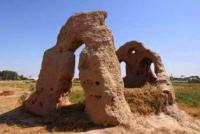
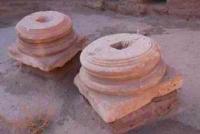
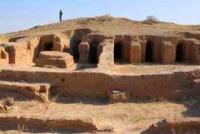
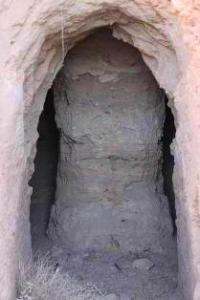
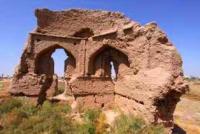
Photo tours in Termez.
“Not the noble deeds of people, but the deeds that ended in success - that’s what the history hastens to capture”
Biger G.
Monuments of Surkhandarya region.
The ancient settlement Termez is located 5 km from present-day Termez, on the left bank of the Amu Darya, and covers an area of about 500 hectares. There are ruins of ancient fortress walls, in some places you can discern a huge gate.
In the western part of the settlement you can see the half-destroyed towers. Within the walls you can see the ruins of the Greek-Bactrian fortress. The ancient Greek astronomer and geographer Claudius Ptolemy in his treatise "Guide to Geography" says that Alexander the Great, having subdued Sogdiana, rushed to the conquest of Bactria.
On the right bank of the Amu Darya or, as it was called in antiquity, Oksa, he built a fortress in the place convenient for ferrying, which was called Alexandria Oksianskaya. After leaving the edge of the Greeks, it was destroyed by nomads.
A hundred years later, the city was rebuilt by Antiochus I and received the name of Antioch Tarmith. Over the centuries, it has developed into one of the largest cities of Bactria, and then the Kushan kingdom. The date of foundation of the city of Old Termez, located a few kilometers east of the modern city, is not known.
In April 2002, the 2500th anniversary of the city of Termez was celebrated. The modern name of the city is Sogd. Tarmiδ goes back to the ancient Iranian tara-maiθa-, meaning "place of transition" (tara- crossing, crossing; maiθa- place). In ancient times there was an important ferry on the Amu Darya River.
Achaemenids, of which the city entered the state in the VIth century BC. e., already called it an ancient city. In 329 BC. E. Alexander of Macedon conquered Termez. Later, the founder of the Greco-Bactrian kingdom, Demetrius called the city Demetris.
As part of the Kushan kingdom (from I to III century AD), the city was called Ta-li-mi (in Chinese sources Tu-mi, Tami. During this period, the city became an important center for the spread of Buddhism. In the Vth - VIth centuries, the city was ruled by Ephtalits, Sassanids.
From the VIIth century onwards, the local dynasty of Termezshahs ruled the city. In 705, the city was captured by the Arabs. In the 9th - 12th centuries, Termez was a large city, a trade, craft, scientific and cultural center. At this time, the length of the defensive structures of the city was 10 kilometers, there were 9 gates.
In the IXth - XIIth centuries, Termez was a part of the Ghaznavid, Seljukid and Karakhanid states. In 1206, the city became part of the Khorezmshah State. In 1220, after a two-day siege, the city was destroyed by the troops of Genghis Khan.
In the second half of the XIIIth century, Termez was restored to the east, on the right bank of Surkhandarya, and was part of the Timurid state, then the Sheibanids. By the second half of the 18th century, the city fell into neglect, only the villages of Salavat and Pattakesar (Pattagissar) remained inhabited in the vicinity of the ancient city.
The ruins of Tarmita are hidden by the Old Termez ancient settlement, which spans over five hundred hectares at a distance of only five kilometers from modern Termez. Over the steep bank of the Amu Darya, the ancient walls with traces of large city gates still rise to this day.
On the western side are preserved swollen towers. On the territory enclosed by walls, the remains of the Greco-Bactrian citadel are preserved. The city walls divided Shahristan and the suburb - Rabad, in which they lived and worked, according to numerous archaeological finds, potters, casters and blacksmiths.
The city cut through the canal supplying residents with water. The most important caravan roads from Central Asia to Balkh and India passed through ancient Termez. The thickness of the cultural layers in the citadel reaches 19 meters.
As the scientists found out, the ancient Termez was not only a major trading center, but the center of the spiritual life of the Great Kushan state. There are several Buddhist monasteries preserved in the ancient settlement of Old Termez, including the cave temple complex Karatepa and Fayaztepa monastery.
These monumental buildings included shrines, stupas for the storage of Buddhist relics and were decorated with paintings and sculptural images of the Buddha and Kushan rulers. The city reached its heyday in the IXth and early XIIIth centuries, being a large trade and craft center of Northern Tokharistan.
The walls of the citadel were reinforced and lined with burnt bricks. A second city wall was built. During the excavations of the settlement, the ruins of a mosque of the IXth-Xth centuries and the minaret of the beginning of the XIth-century, madrasas and handicraft quarters were uncovered, remains of the aqueduct and the ruins of the Termezshahs palace were discovered.
It was a magnificent building with a high arched portal. In the middle of the courtyard was placed quadrangular stepped pool. The courtyard was surrounded by residential pavilions, and directly opposite the entrance, in the depths of the large aivan, the ruler’s throne room was located.
Its walls were decorated with ornamental painting and ganch carving, as well as heraldic images of lions, griffins and fantastic animals. The palace was built of mud brick, but figured and carved burnt bricks were used in the decoration of the front rooms.
On the territory of Old Termez, the mazar of Sheikh al-Termezi, the spiritual patron of the city, remained almost undamaged by time. According to legend, in the fall of 1220, Genghis Khan set up his military camp near Termez. After offering the residents of the city to surrender, he was refused.
Then he began the siege of the fortress and, taking it by the end of the ninth day by storm, destroyed the city and exterminated the entire population. Another four centuries, people tried to inhabit the ruins of the old settlement, until it completely left.
For one and a half thousand years, here, on the ancient settlement of Old Termez, life was in full swing, civilizations succeeded each other, different religions adjoined. The silent ruins still contain many archaeological sensations and historical discoveries.
Old Termez is divided by walls into two sectors - shahristan and rabad (suburb), in the latter, as evidenced by many archaeological finds, artisans - blacksmiths, potters, masters of foundry lived and worked. Through the whole city was a canal, which served as the main source of water for local residents.
Termez was a significant transit point on the caravan route connecting Central Asia with Balkh and India. During the reign of the oldest dynasty of the Kushan kingdom, the city acquired the name of Termite, after which it became the largest religious and administrative center of Northern Bactria. Kushan rulers adhered to religious tolerance, Buddhism was worshiped and flourished along with other religions.
There are several Buddhist monasteries on the territory of the settlement, including the cave temple complex Karatepa and the holy monastery Fayaztepa. These ancient monumental buildings had shrines and stupas for the storage of Buddhist relics.
All of them were decorated with ancient paintings, sculptural images of the Buddha and the rulers of those times. Archaeologists managed to find here the remains of a mosque of the IXth-Xth centuries, a minaret of the beginning of the XIth century, a madrasa and several quarters of craftsmen.
Also here were found the remains of the aqueduct and the ruins of a magnificent building with a high portal - the palace of Termezshahs. The walls of the palace once glittered with paintings of fantastic animals. The entire palace was built of mud brick, and carved burnt brick of various forms was used in the decoration of the front rooms.
The mazar of the city’s spiritual patron, Sheikh al-Termezi, remained almost intact in time on the territory of the settlement. This architectural ensemble is one of the most complex architectural structures in all of Central Asia.
For several thousand years on the territory of Surkhandarya a bright life was in full swing, civilizations succeeded each other, the city overcame the times of many empires, sharing its fate with such great people as Alexander of Macedon, Genghis Khan, Amir Temur.
Archaeological research is conducted here today, because these ancient ruins are fraught with many more historical discoveries.
Authority:
https://meros.uz







